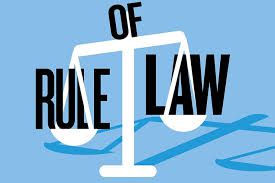Antemortem Hanging: Signs And Symptoms and their Police Investigation
Antemortem hanging refers to the act of hanging oneself while still alive.
Antemortem hanging is typically associated with suicide, although it can also
occur accidentally or as a result of foul play. This is in contrast to
postmortem hanging, where the hanging occurs after death.
The Signs And Symptoms Of Antemortem Hanging Are As Follows:
External Signs:
Internal Signs:
Police Investigation of Antemortem Hanging:
Written By: Md.Imran Wahab, IPS, IGP, Provisioning, West Bengal
Email: [email protected], Ph no: 9836576565
The Signs And Symptoms Of Antemortem Hanging Are As Follows:
External Signs:
- The neck may exhibit a stretched or elongated appearance due to the presence of a ligature.
- The ligature mark may be oblique and non-continuous, usually above the level of thyroid cartilage. The location where a ligature was secured can frequently be seen as a mark on the neck, which can appear as a straight line, a V-shape, or an inverted V-shape, depending on the type of ligature and how it was fastened.
- The tissue underneath ligature mark is dry, pale, hard and glistening.
- Signs of a physical altercation (struggle) may be visible, including scratches, bruises, or injuries to the neck, hands, or other areas of the body.
- The direction of force can be determined by observing the position of the head, which is typically bent in the opposite direction of the knot.
- Pale skin may be present on the face, possibly due to decreased blood flow.
- Due to restricted blood flow and oxygenation, the face might seem congested or cyanotic (blue). Swelling of the face is commonly observed during the first stage but will usually disappear as soon as the rope is cut or removed.
- There may be red or purple marks on the skin (formation of petechiae), specifically around the eyes (known as conjunctival petechiae) or on the face and neck, resulting from damaged capillaries caused by the compression of blood vessels during hanging.
- Pressure on the airway may cause dribbling of saliva. The presence of saliva running down the chest indicates that gravity has affected the body after death.
- Bloody froth may be observed in the mouth and airways due to lung congestion.
- Haemorrhage in the middle ear may be evident due to pressure in the head and neck region.
- Involuntary muscle contractions may cause discharge of semen/stool/urine.
- Gravity may cause blood to pool in the lower limbs, resulting in hypostasis.
Internal Signs:
- The absence of petechiae internally suggests complete blockage of blood flow in the arterial system.
- Pulmonary oedema, the accumulation of fluid in the lungs, may also be present.
- Evidence of antemortem (before death) trauma to the neck can be seen in fractures of the hyoid bone and thyroid cartilage.
- The vertebral artery may have ruptured due to pressure on the neck.
- Tearing of the thyrohyoid ligament suggests a significant amount of force was applied to the neck.
- Petechiae haemorrhages may be found in the trachea, epiglottis, and larynx, caused by the pressure on blood vessels.
- Because of the accumulation of blood in abdominal organs due to compressed lungs and the abdomen, abdominal congestion may be present.
Police Investigation of Antemortem Hanging:
- Scene examination: The police and forensic experts will carefully examine the location where the hanging took place. They will document the position of the body, the condition of the ligature, any signs of struggle, and any potential evidence that could provide insight into what happened.
- Collecting evidence: Any physical evidence found at the scene, such as fingerprints, DNA, fibres, and objects that may have been involved, will be collected and analysed.
- Autopsy: A thorough autopsy will be conducted by a medical examiner to determine the cause and manner of death. In cases of hanging, the autopsy may reveal signs of asphyxiation, neck injuries, or other trauma that can help determine the timing of the hanging in relation to the individual's death.
- Toxicology testing: To check for the presence of drugs or alcohol in the deceased's system, toxicology testing may be performed. This can help determine if these substances played a role in the death or influenced the individual's behaviour leading up to the hanging.
- Interviews and witness statements: The police will interview witnesses, family members, friends, and anyone else who may have information about the individual's state of mind and the circumstances leading up to the hanging. This can provide insight into their mental state, recent changes in behaviour, and potential motives.
- Background Investigation: Investigators will conduct a thorough background check on the individual, including their mental health history, any previous suicide attempts, recent life events, and relationships. This can help paint a better picture of their state of mind and potential reasons for the hanging.
- Collaborating with Experts: In more complex cases, the police may seek assistance from forensic psychologists, psychiatrists, or other professionals to gain insight into the individual's mental state and behaviour leading up to the hanging.
- Final Determination: The medical examiner will use the evidence collected during the investigation to determine the cause and manner of death, which will inform the police's conclusion. If the evidence suggests foul play, the case may be treated as a homicide.
Written By: Md.Imran Wahab, IPS, IGP, Provisioning, West Bengal
Email: [email protected], Ph no: 9836576565
Law Article in India
Legal Question & Answers
Lawyers in India - Search By City
LawArticles
How To File For Mutual Divorce In Delhi

How To File For Mutual Divorce In Delhi Mutual Consent Divorce is the Simplest Way to Obtain a D...
Increased Age For Girls Marriage

It is hoped that the Prohibition of Child Marriage (Amendment) Bill, 2021, which intends to inc...
Facade of Social Media

One may very easily get absorbed in the lives of others as one scrolls through a Facebook news ...
Section 482 CrPc - Quashing Of FIR: Guid...

The Inherent power under Section 482 in The Code Of Criminal Procedure, 1973 (37th Chapter of t...
The Uniform Civil Code (UCC) in India: A...

The Uniform Civil Code (UCC) is a concept that proposes the unification of personal laws across...
Role Of Artificial Intelligence In Legal...

Artificial intelligence (AI) is revolutionizing various sectors of the economy, and the legal i...








Please Drop Your Comments